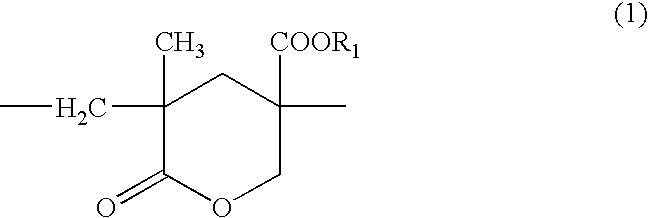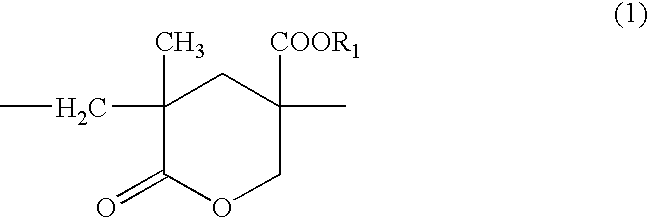Transparent gas-barrier layered film
a technology of transparent gas and layered film, which is applied in the direction of synthetic resin layered products, transportation and packaging, coatings, etc., can solve the problems of inability to afford a high barrier property, severe demand for gas-barrier properties, and limited material selection of thin films produced from inorganic compounds, and achieve excellent barrier properties to vapor
- Summary
- Abstract
- Description
- Claims
- Application Information
AI Technical Summary
Benefits of technology
Problems solved by technology
Method used
Image
Examples
example 1
[0076] As a macromolecular film, “Tetron” (OPFW, thickness: 125 μm) which was a biaxially elongated polyethylene terephthalate film manufactured by Teijin-Du Pont Film was used. On one side of this film, a dope for formation of a resin layer was prepared in such a manner that the resin solution prepared in the above (4) was used and diluted with 1M2P so that the partial rate by weight of the resin A1 to the resin B1 and solid concentration were finally made, 25:75 and 22.5% by weight, respectively.
[0077] Then this dope was applied on one side of the polyethylene terephthalate film using a Meyer bar and dried at 70° C. for 1 minute. Then UV light of 250 nm was irradiated onto the applied surface for 1 minute. After that, it was allowed to stand in a drier of 130° C. for 3 minutes to give a resin layer of 2.5 μm thickness.
[0078] Then, the polyethylene terephthalate film where a resin layer was formed was poured into a sputtering chamber. The ultimate degree of vacuum in the chamber ...
example 2
[0080] The same operation as in Example 1 was carried out except that “Teonex” (Q65A, thickness: 200 μm) which was a biaxially elongated polyethylene 2,6-naphthalate film manufactured by Teijin-Du Pont Film as a macromolecular film to manufacture a transparent gas-barrier layered film.
[0081] Vapor permeating amount of this transparent gas-barrier layered film was 0.08 g / m2 / day and oxygen permeating amount thereof was 0.9 cc / m2 / day. Transmission rate of the whole light was 90% and x of SiOx was determined to be 1.9 by an Auger electron spectroscopic method. Result of the cross-cut was 100 / 100. This layered film was subjected to a heating treatment at 130° C. for 2 hours but there was no change in the above-mentioned characteristics.
example 3
[0082] The same operation as in Example 1 was carried out except that a polycarbonate manufactured by Teijin Kasei (“Pure Ace” WR, thickness: 120 μm) was used as a macromolecular film to manufacture a transparent gas-barrier layered film.
[0083] Vapor permeating amount of this transparent gas-barrier layered film was 0.10 g / m2 / day and oxygen permeating amount thereof was 1.2 cc / m2 / day. Transmission rate of the whole light was 90% and x of SiOx was determined to be 1.9 by an Auger electron spectroscopic method. Result of the cross-cut was 100 / 100. This layered film was subjected to a heating treatment at 130° C. for 2 hours but there was no change in the above-mentioned characteristics.
PUM
| Property | Measurement | Unit |
|---|---|---|
| glass transition temperature | aaaaa | aaaaa |
| glass transition temperature | aaaaa | aaaaa |
| temperature | aaaaa | aaaaa |
Abstract
Description
Claims
Application Information
 Login to View More
Login to View More - R&D
- Intellectual Property
- Life Sciences
- Materials
- Tech Scout
- Unparalleled Data Quality
- Higher Quality Content
- 60% Fewer Hallucinations
Browse by: Latest US Patents, China's latest patents, Technical Efficacy Thesaurus, Application Domain, Technology Topic, Popular Technical Reports.
© 2025 PatSnap. All rights reserved.Legal|Privacy policy|Modern Slavery Act Transparency Statement|Sitemap|About US| Contact US: help@patsnap.com



